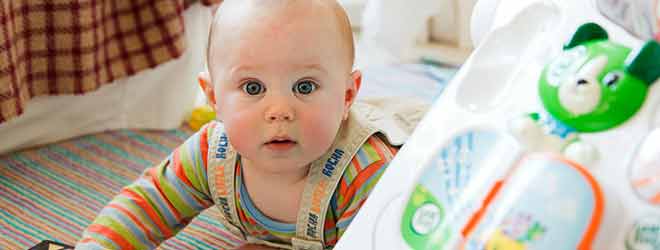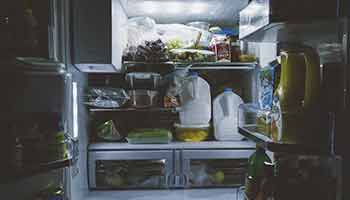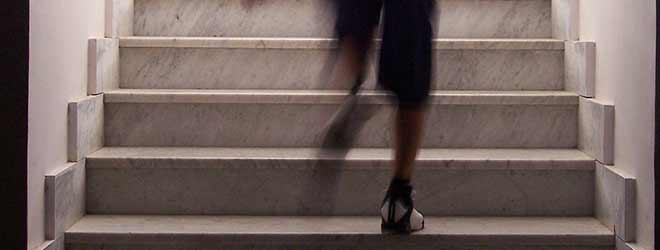
Childproofing your home is a key step in protecting your children from harm. It is important to childproof your home multiple times. First before your child is born, again once the child is crawling and also once your child is walking. The best way to childproof your home is to get down on your hands and knees so you can see everything from your child’s height. This will help you find hazards you might have otherwise missed. The best way to protect your child is with adult supervision. However, these helpful childproofing tips will keep your children safe and happy inside your home:
Childproofing Your Kitchen:
 Stoves & Ovens – risk of child turning on the burners or knobs. Children can also open ovens and crawl inside and suffocate.
Stoves & Ovens – risk of child turning on the burners or knobs. Children can also open ovens and crawl inside and suffocate.- Dishwashers – risk of child cutting themselves on any knives, cups, glassware or items in the dishwasher. Children can also open dishwashers and crawl inside and suffocate.
 Refrigerator – risk of choking hazard from any food inside the refrigerator. Children can also open the refrigerator and crawl inside and suffocate.
Refrigerator – risk of choking hazard from any food inside the refrigerator. Children can also open the refrigerator and crawl inside and suffocate.- Cabinets & Drawers – risk of children having access to knives, sharp objects, cleaning supplies, chemicals, poisons and medications, which create a choking hazard.
Tip: Install locking latches on stoves and ovens. Install knob covers to prevent children from accessing knobs. Have a stove guard to protect their hands.
Tip: Install locking latch.
Tip: Install locking latch.
Tip: Install locking latches. Remove all poisons, chemicals and cleaning supplies from any cabinets your children may have access to and keep them locked away and out of reach.
Childproofing Your Living Room:
- Plants – risk of children ingesting plants, some of which can cause illness or death. Potting soil, rocks, marbles or other materials can cause choking hazards.
- Decorative Knick-Knacks – risk of children receiving cuts from broken glass, china or other fragile materials.
 Coffee Tables & End Tables – risk of children injuring themselves on sharp corners.
Coffee Tables & End Tables – risk of children injuring themselves on sharp corners.

Tip: Do not use any rocks or marbles in your plants. Do not keep any poisonous plants inside your home. Make sure you are aware of the types of plants inside your home and label them accordingly.
Tip: Keep all breakable decorations out of the reach of your children. The best thing is to remove such items until your children are older.
Tip: Install table cushions on each corner of the table. There are table cushions to go around all edges of the table.
Childproofing Around the House:

- Stairs – risk of children suffering injuries from falls.
- Smoke Detectors – risk of burns, severe injury and death.
- Carbon Monoxide Detectors– risk of carbon monoxide poisoning, which can cause memory loss, learning disabilities and neurological problems. Expecting mothers can experience miscarriages or stillbirths.
- Water Heaters – risk of burns and death.
 Electrical Outlets– risk of electrocution.
Electrical Outlets– risk of electrocution.- Electrical Cords – risk of injury from pulling cords and having heavy items fall on children. Teething children may also chew on the cords and be electrocuted.
- Doors – risk of injury to children’s fingers. Children may also be injured if they are able to gain access to the outside or closed off areas of your house.
- Windows – risk of injury from falls.
- Toilets – risk of injury and drowning if a child falls in and cannot get out.
- Floors– risk of injury from falling on carpet, uneven surfaces and slippery floors. There is also a risk of choking from items dropped on the floor.
Tip: Place child safety gates at the top and bottom of stairs.
Tip: Install smoke detectors in each bedroom and every floor of your home. Children and babies are most at risk because they cannot escape fire themselves.
Tip: Install carbon monoxide detectors.
Tip: Keep your water heater’s thermostat at 120 degrees or below. Test bathwater before putting your child in the bathtub.
Tip: Place outlet covers or tamper-resistant outlet covers on all electrical outlets.
Tips: Install cord bundlers and secure cords to prevent pulling. Install cord shorteners.
Tip: Place safety covers on the doors to prevent your child from opening the door. Install doorstops.
 Tip: Lock your windows. Remove any furniture or anything your child could climb on to reach the window. You may want to install window guards.
Tip: Lock your windows. Remove any furniture or anything your child could climb on to reach the window. You may want to install window guards.
Tip: Install a toilet lid lock. Never leave children in the bathroom alone.
Tip: Keep floors clean by vacuuming and sweeping. Pick up any dropped items or food immediately. Keep any pet food out of the reach of children.


